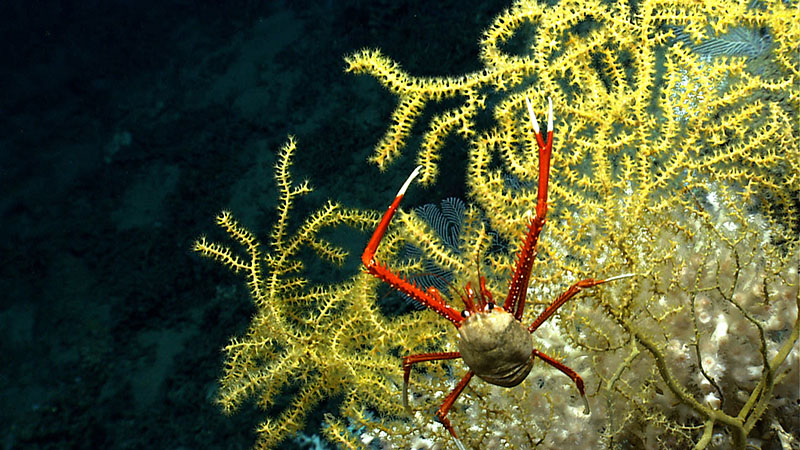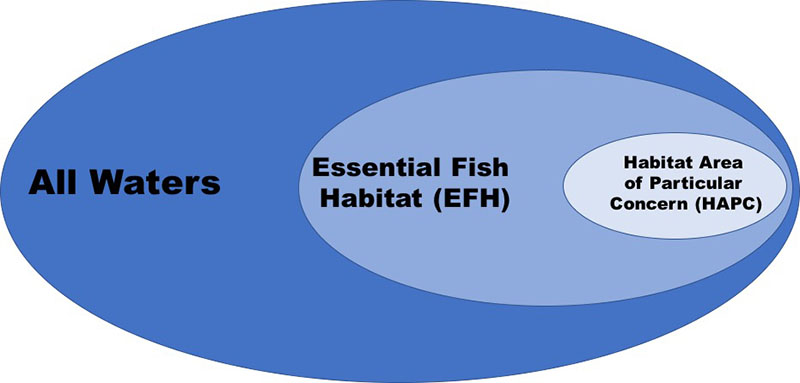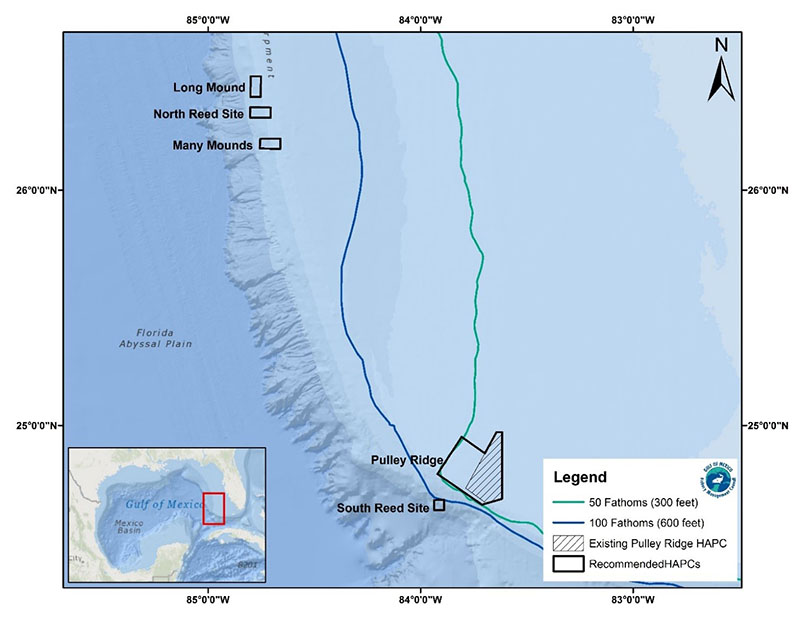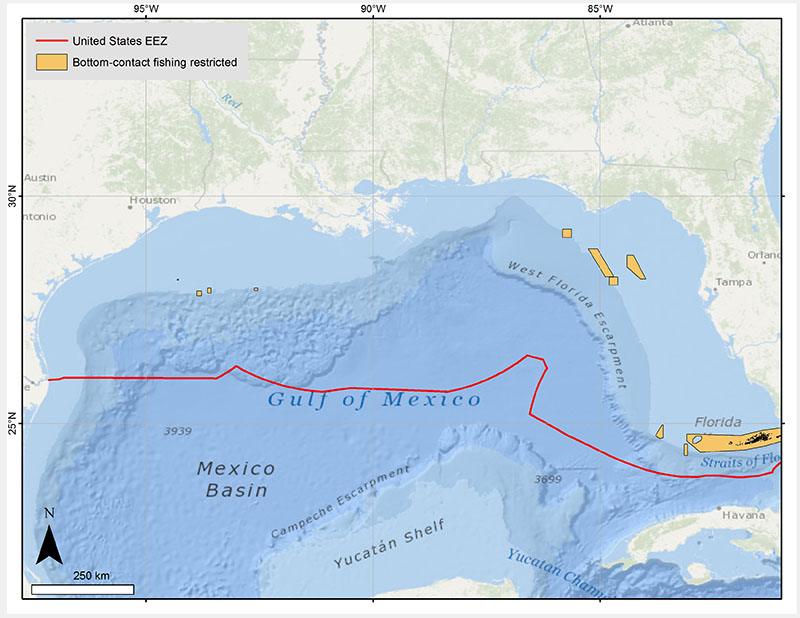
By Morgan Kilgour, Gulf of Mexico Fishery Management Council

Photograph of deep-sea coral and a squat lobster on the West Florida Shelf at a depth of 550 meters. The photograph was taken during a 2014 expedition in an area that is currently being considered for designation as a habitat area of particular concern by the Gulf of Mexico Fishery Management Council. Image courtesy of the NOAA Office of Ocean Exploration and Research, Gulf of Mexico 2014. Download larger version (jpg, 1.6 MB).
The Gulf of Mexico Fishery Management Council (GMFMC) is responsible for managing fishery resources in the U.S. federal waters of the Gulf of Mexico, which extend from state waters to the 200-mile boundary of the U.S. Exclusive Economic Zone. The Council has nine fishery management plans to manage fishery resources in the best interest of the people of the United States. One of these fishery management plans is for corals and manages over 100 species of black and stony corals that are found throughout the Gulf.
Recent deep-sea surveys in the Gulf of Mexico have highlighted that some areas, including some that are particularly important ecologically, may be affected by fishing gear. As a result, scientists and advisory bodies to the Council have recommended that specific areas be considered for special protections as habitat areas of particular concern (HAPCs). HAPCs are a subset of essential fish habitat (EFH) in that these areas are considered to provide extremely important ecological functions, or are especially vulnerable to degradation. Any human activity (e.g., oil and gas exploration, mining, tourism, fishing) in an EFH requires consultation with the NOAA National Marine Fisheries Service in order to assess the potential impacts of that activity.

Schematic showing different management categories of fishery resources. The ecological importance and need to manage fishery resources in each category increases from left to right. Image courtesy of Daniel Wagner/NOAA. Download larger version (jpg, 117 KB).
The designation of an area as an HAPC has important management and conservation implications, because it may afford the area greater protection, especially if the area is deemed to contain significant coral communities. In such cases, HAPC designation may also lead to the prohibition of fishing activities (although not necessarily) in order to conserve the ecological functions of the area.
The process of identifying new HAPCs in the Gulf of Mexico began in 2014, with a series of meetings and workshops that brought together fishermen, scientists, and managers in order to identify and prioritize areas that should be considered for HAPC designation. By incorporating diverse stakeholders in these discussions, including fishermen, scientists, and other groups, the Council was able to determine boundaries of these proposed HAPCs that would best protect vulnerable coral communities, while also minimizing impacts on the fishing community.

Map showing areas on the West Florida Shelf that are currently being considered as potential habitat areas of particular concern by the Gulf of Mexico Fishery Management Council. Image courtesy of GMFMC. Download larger version (jpg, 327 KB).
Several of these proposed HAPCs occur on the limestone ledges off the West Florida Shelf, which will be the focus of the 2017 Southeast Deep Coral Initiative expedition. The Council is particularly interested in surveying this area because such surveys will provide important information on the diversity and extent of coral communities that may occur in the region, as well as whether these communities are affected by fishing activities. This information will in turn be particularly valuable to determining whether additional conservation measures are warranted in these proposed HAPCs.
The Gulf of Mexico currently has six established HAPCs that prohibit fishing with bottom contact gear, in addition to several marine reserves, seasonal fishing closures, and two national marine sanctuaries; there are also several HAPCs that do not have any regulations. If all of the proposed HAPCs on the West Florida Shelf become established, this would double the number of HAPCs with fishing regulations that restrict bottom contact gear in the Gulf.

Map showing areas in the Exclusive Economic Zone (EEZ) of the U.S. Gulf of Mexico where fishing with bottom contact gear is restricted. Image courtesy of Daniel Wagner/NOAA. Download larger version (jpg, 1.9 MB).